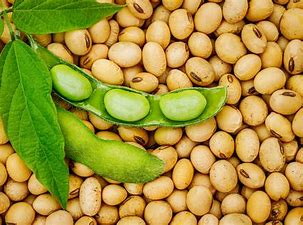2022/23 cycle will start to be planted next Sunday; production will grow 25m tonnes if weather cooperates
09/09/2022

Sowing of another Brazilian soybean crop will begin next Sunday, with all the signs of a new record. If the weather cooperates, as the current forecasts indicate, the harvest should be at least 25 million tonnes larger in the 2022/23 season and exceed the 150 million tonnes mark for the first time, with positive effects on the gross value of agricultural production, GDP and the country’s trade balance.
According to estimates released Thursday by the National Supply Company (Conab), the 2021/22 season totaled 125.6 million tonnes of soybeans, 9.1% less than in 2020/21, because of a strong harvest loss in the South region and part of Mato Grosso do Sul caused by drought. And, according to Conab’s first projections for the new cycle, production will now reach 150.4 million tonnes, in a crop area of 42.4 million hectares, 3.5% higher.
Thus, if in the 2021/22 cycle the flagship of agribusiness in the country represented 46.3% of the total grain harvest even with weather damages, in 2022/23 it will account for 48.8%, according to Conab. Private-sector consultants believe, however, that the volume may be even higher, provided that the influence of the La Niña phenomenon is mild. StoneX, for example, reckons that the planted area will grow 3.9% and, with better yields overall, production will reach 153.6 million tonnes.
“La Niña tends to result in drier weather in the South, which penalized the region’s 2021/22 season. However, the atmospheric phenomenon does not necessarily mean harvest losses, as the record result achieved in Rio Grande do Sul in 2020 shows,” the consulting firm said in a recent report. According to StoneX, planting will advance in all regions of Brazil. Mato Grosso will continue to lead production, and Rio Grande do Sul and Paraná will compete for second place.
After the waiting period, which is mandatory to prevent the spread of pests and diseases, the sowing will be released on October 11 in Paraná and Rondônia. In states like Mato Grosso, Mato Grosso do Sul and São Paulo, the green light comes on October 16, and farmers in Goiás will go to the fields on October 25. In Rio Grande do Sul, the waiting period will end only on October 10.
Although production costs have increased significantly, mainly due to higher fertilizer prices, the persistently high soybean prices in the international and domestic markets prop up the projections of higher production. In the Chicago exchange, the main reference for prices in this market, the benchmark second-position future contract is up more than 8% in 12 months, almost 43% in 24 months and around 60% in the last three years.
Sustained by firm global demand, mainly for the production of poultry and pork feed – and especially from China – these high prices are reflected in the gross value of agricultural production of the crop. According to the Ministry of Agriculture, production will reach R$350.6 billion in 2022, down 10.8% from 2021, because of the harvest loss, but the second-best result ever, up 123% from 10 years ago. And, as prices are steady, one can expect an advance proportional to the harvest in 2023.
Brazil is the largest producer and exporter of soybeans. And exports are expected to resume growth next year after a drop caused by lower availability in 2022. According to the Brazilian Association of Vegetable Oil Industries (Abiove), this year shipments of the grain will total 76.8 million tonnes, down 10.8% from 2021. Yet, revenues will grow 16.3% to $44.9 billion. Conab expects shipments of 92 million tonnes in 2023, while revenues are expected to exceed $50 billion.
*By Fernando Lopes — São Paulo
Source: Valor International
